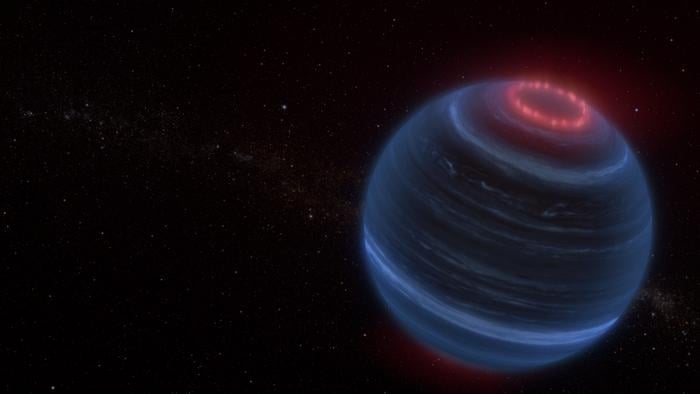Using new observations from the James Webb Space Telescope (JWST), astronomers have found methane emission on a brown dwarf, an unexpected discovery for such a cold and isolated world. The findings, published in the journal Nature, suggest that this brown dwarf might have aurorae similar to those seen on Earth, Jupiter, and Saturn.
Brown Dwarf W1935: A Surprising Observation
Among the 12 brown dwarfs investigated by a team of researchers led by Jackie Faherty, a senior research scientist and senior education manager at the American Museum of Natural History, was CWISEP J193518.59–154620.3 (or W1935 for short). W1935 is a cold brown dwarf 47 light years away with a surface temperature of about 400° Fahrenheit. While examining the data, Faherty’s team noticed that W1935 was emitting methane, something never seen before on a brown dwarf.
“Methane gas is expected in giant planets and brown dwarfs but we usually see it absorbing light, not glowing,” said Faherty, the lead author of the study. “We were confused about what we were seeing at first but ultimately that transformed into pure excitement at the discovery.”
Temperature Inversion: A Puzzling Phenomenon
Computer modeling revealed another surprise: W1935 likely has a temperature inversion, where the atmosphere gets warmer as altitude increases. While temperature inversions can easily happen to planets orbiting stars, W1935 is isolated, with no obvious external heat source.
“We were pleasantly shocked when the model clearly predicted a temperature inversion,” said co-author Ben Burningham from the University of Hertfordshire. “But we also had to figure out where that extra upper atmosphere heat was coming from.”
Aurorae: A Possible Explanation Inspired by Solar System Giants
The researchers turned to studies of Jupiter and Saturn, which both show methane emission and have temperature inversions, likely caused by aurorae. On these solar system giants, high-energy particles from the Sun interact with the planets’ magnetic fields and atmospheres, heating the upper layers. However, with no host star for W1935, a solar wind cannot explain the phenomenon. The researchers speculate that another explanation for the aurora on W1935 might be an active, yet-to-be discovered moon, similar to Jupiter’s moon Io or Saturn’s moon Enceladus.
The Potential for Groundbreaking Discoveries with JWST
“Every time an astronomer points JWST at an object, there’s a chance of a new mind-blowing discovery,” said Faherty. “Methane emission was not on my radar when we started this project but now that we know it can be there and the explanation for it so enticing I am constantly on the look-out for it. That’s part of how science moves forward.”
This work was supported in part by NASA and the Space Telescope Science Institute.
If our reporting has informed or inspired you, please consider making a donation. Every contribution, no matter the size, empowers us to continue delivering accurate, engaging, and trustworthy science and medical news. Independent journalism requires time, effort, and resources—your support ensures we can keep uncovering the stories that matter most to you.
Join us in making knowledge accessible and impactful. Thank you for standing with us!

